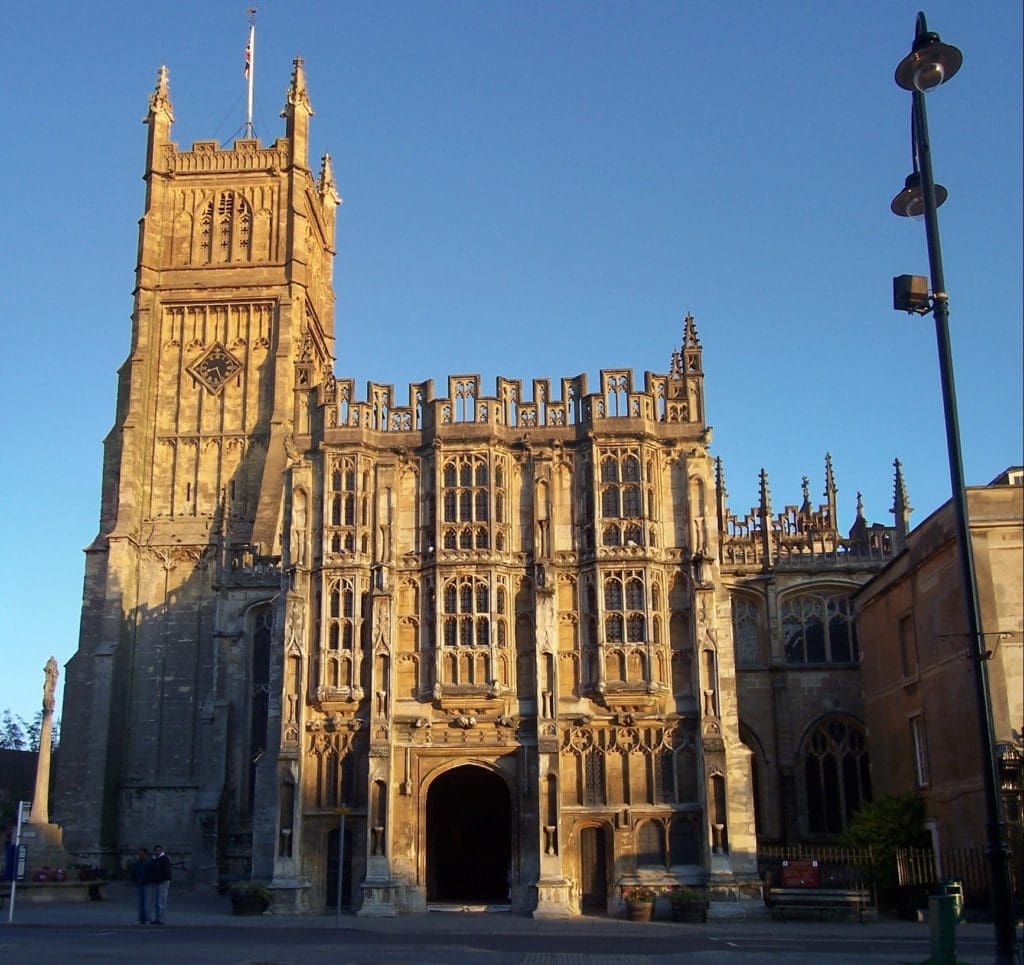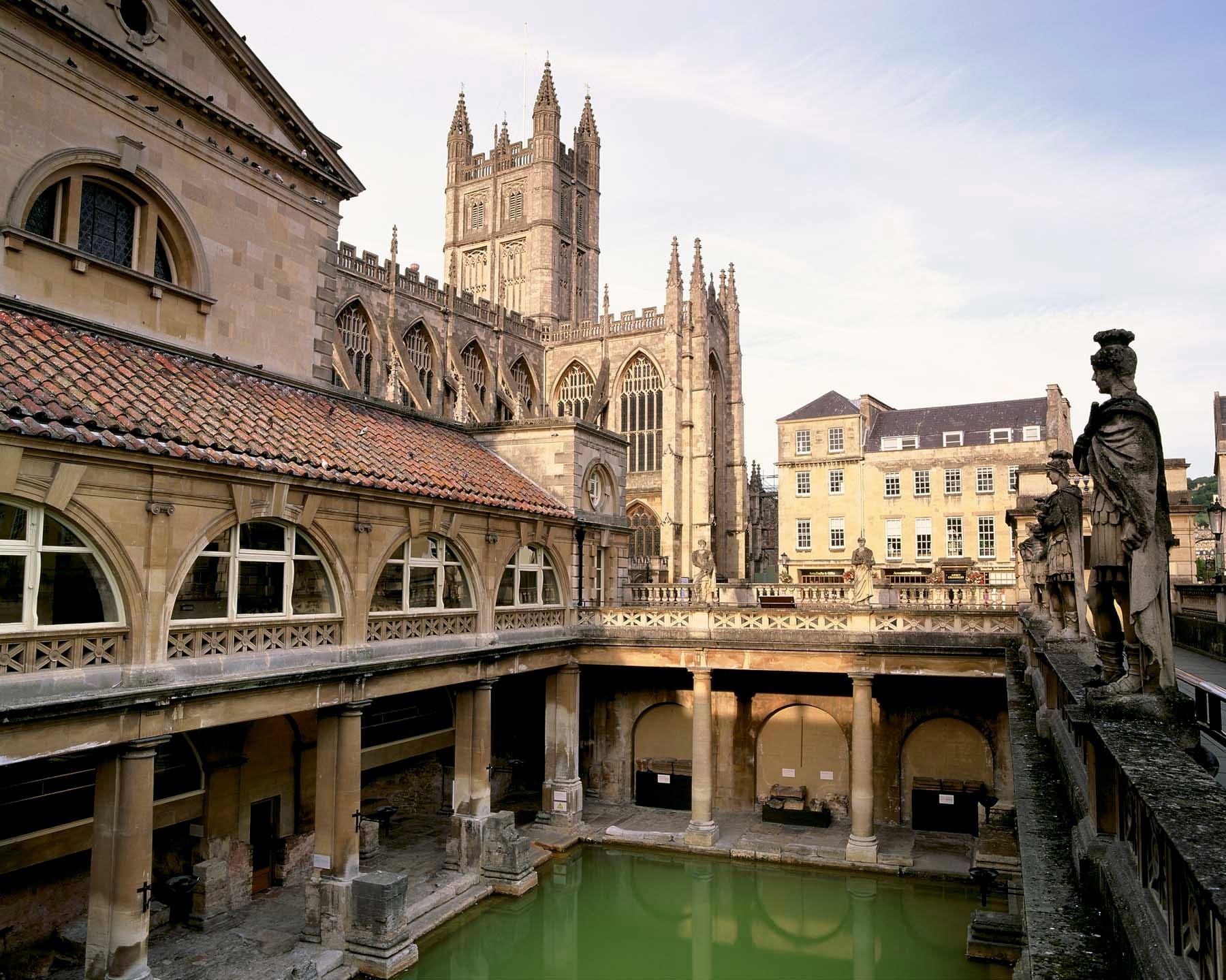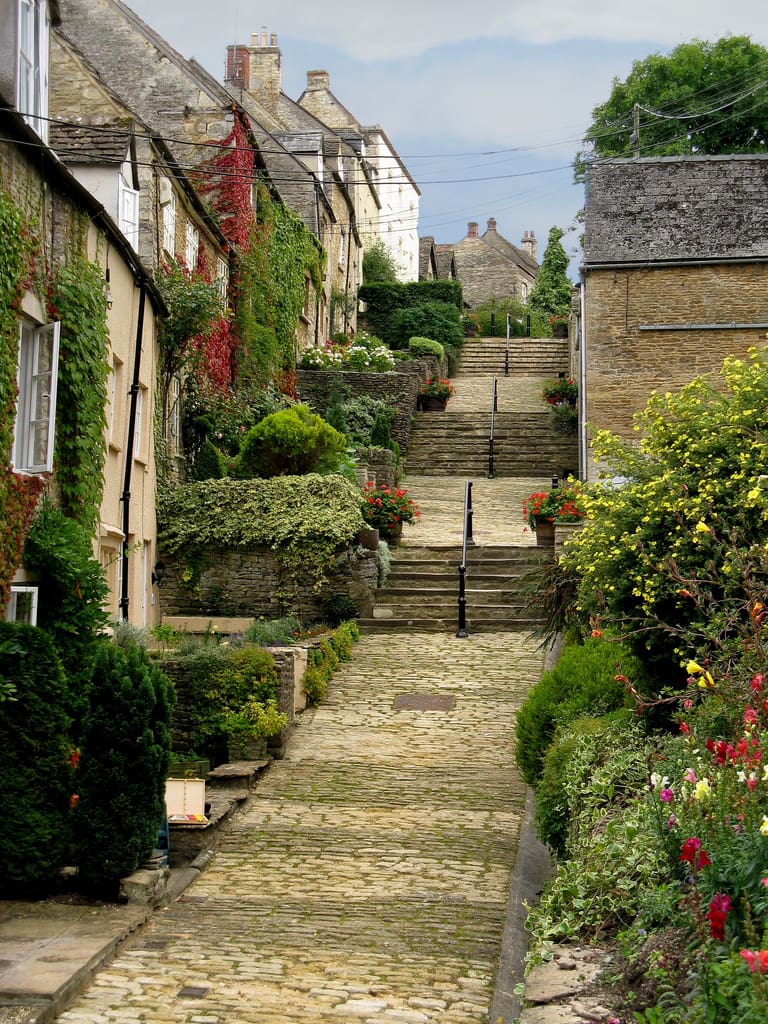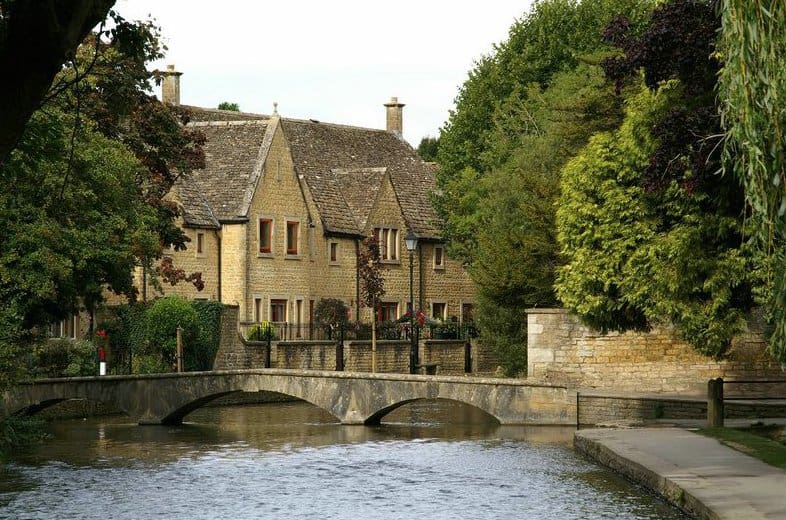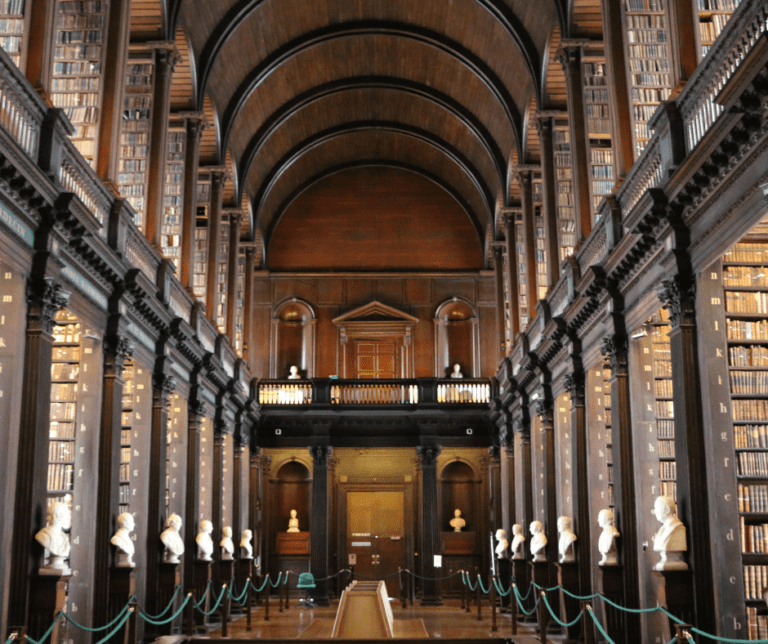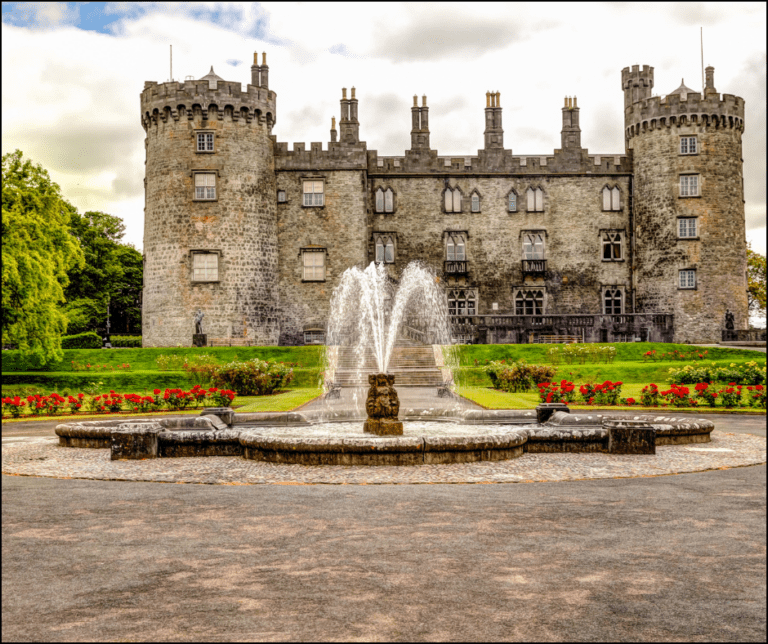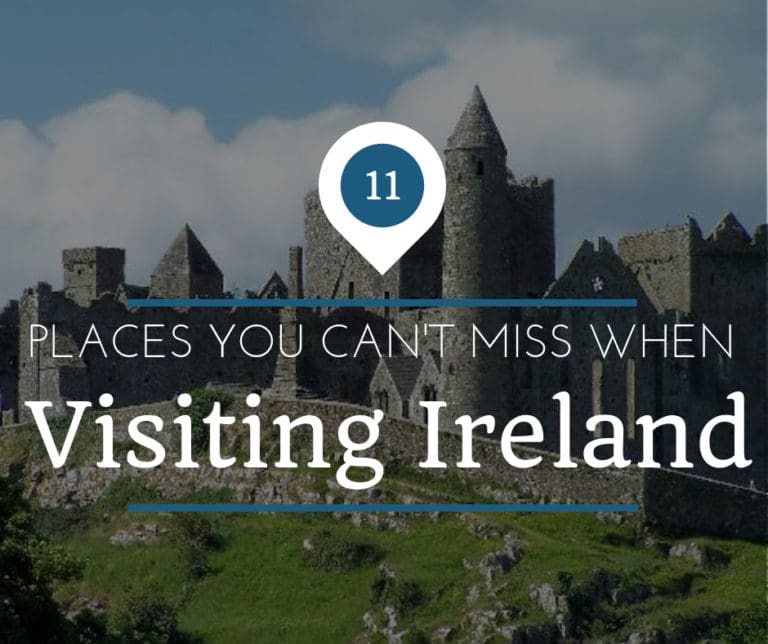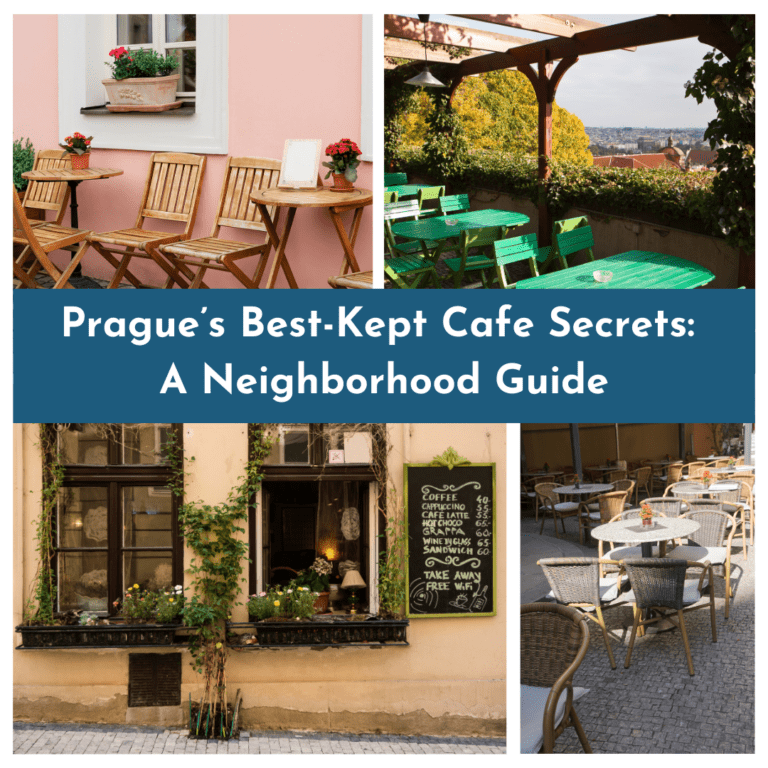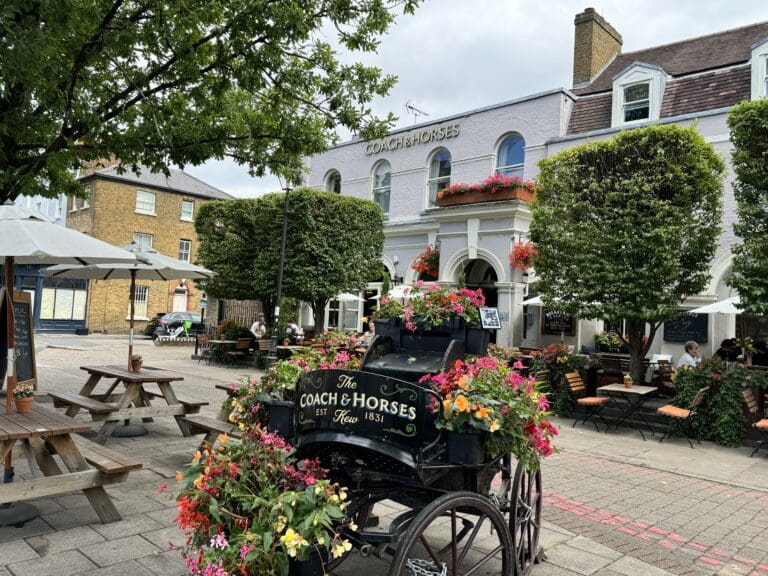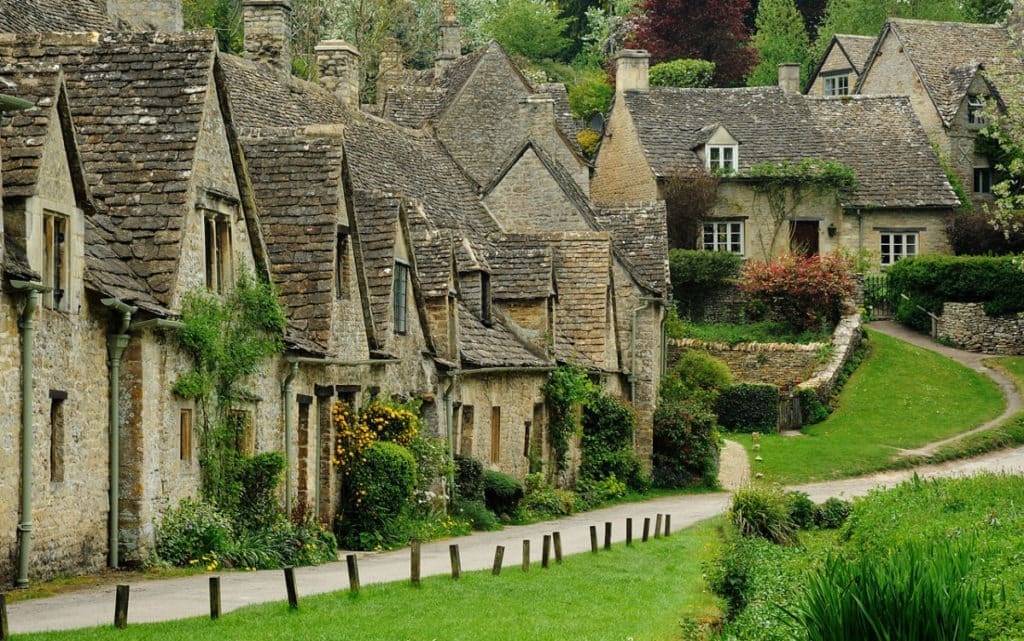
Defined by its rolling hills, or ‘wolds’, the Cotwolds captures quintessential rural England at its finest.
The largest of 38 Areas of Outstanding Natural Beauty in England, the Cotswolds runs through five counties; Gloucestershire, Oxfordshire, Warwickshire, Wiltshire, and Worcestershire. Geologically, the Cotswolds is a limestone mass stretching 100 miles with the towns of Bath to the south and Chipping to the north.
Explore the picturesque countryside, discover quaint villages and market towns, browse antique shops, stop in a cozy pub, and soak up the rich history of the area.
If you enjoy the outdoors, appreciate history, and want to see traditional England than the Cotswolds is definitely for you!
Bibury
One of my favorite villages in all of England, Bibury is classic charming England. The village’s popular spot overlooking a water meadow is Arlington Row, a group of ancient cottages with steeply pitched roofs dating back to the 16th Century.
Even Henry Ford thought Arlington Row was an icon of England so much so that on a trip to the Cotswolds, Mr. Ford tried to buy the entire row of houses to ship back to Michigan to include them in Greenfield Village.
Check out the cutest B&B’s where you can stay in the Cotswolds.
Castle-Combe
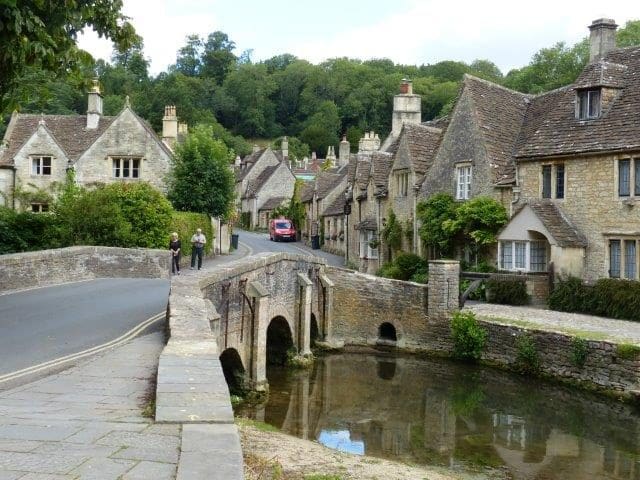
Castle Combe has often been called ‘The Prettiest Village in England’, and for good reason. Visitors have been coming to enjoy its charms for at least a century.
The small street leading from the Market Cross down to the By Brook is as picturesque today as it ever was. Walk through the small village center and take in the quaint ambiance and charming ambiance.
—> Read More: 9 ‘Must-See’ Historic Towns In Southern England
Cirencester
The self-proclaimed capital of the Cotswolds is a beautiful and sizeable town. Cirencester was the second most important town in Roman Britain and many remains from Roman, Norman, and Saxon times can be found at the Corinium Museum.
Here you can also dress up like a Roman soldier and find out what the Saxons really looked like.
Bath
Located at the southern end of the Cotswolds, Bath is a city steeped in history. Bath is known for its Georgian classical architecture and the beautiful intact ancient Roman baths, which is the most popular attraction in the city. The presence of hot springs and easily worked limestone made it attractive to the Romans which flourished for 400 years.
The city declined quickly after the Romans left Britain and did not thrive again until the eighteenth century. Once again it was water and stone that made it great but this time of Georgian influenced architecture. The city has more officially listed significant (5000) buildings than central London and most originate from the 18th century.
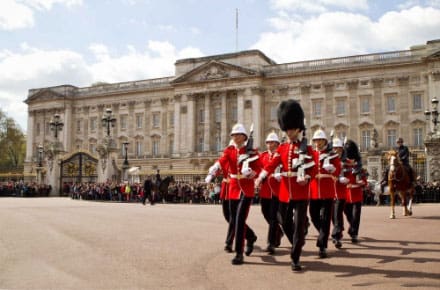
Planning a Trip to England?
We can help create your perfect itinerary!
- Worried you'll miss the hidden gems?
- How long should you stay in each place?
- Should you rent a car, train it, or both?
Bradford-on-Avon
The magical appeal of Bradford’s position on the banks of the River Avon gives visitors a wonderful setting for leisure, cultural, and tourist activities in the Cotswolds.
Bradford-on-Avon has delightful shops, restaurants, hotels and bed and breakfasts lining the narrow streets of the town centre. The surrounding hillside is covered with cotswold stone houses and cottages of every shape and size.
Tetbury
In the Middle Ages, Tetbury was an important market town for the Cotswolds wool trade. The town center is still dominated by the splendid pillared Market House built in 1655.
Tetbury is known as an ‘architectural gem’ for the many wool merchants houses that still look as they did 300 years ago. Also well known are the 25 antique shops and the annual Book Festival thrown in the town.
Burton-on-the-Water
Bourton-on-the-Water has been described as the ‘Little Venice’ of the Cotswolds and is one of the most popular tourist spots in the region being serviced by the many shops, cafe’s, and attractions.
The lovely English village straddles the river Windrush with its series of elegant low bridges beside neat tree-shaded greens and tidy stone banks. Standing back from the river are traditional Cotswolds buildings, many of which are now tourist shops for the day-trippers and visitors.
Lacock
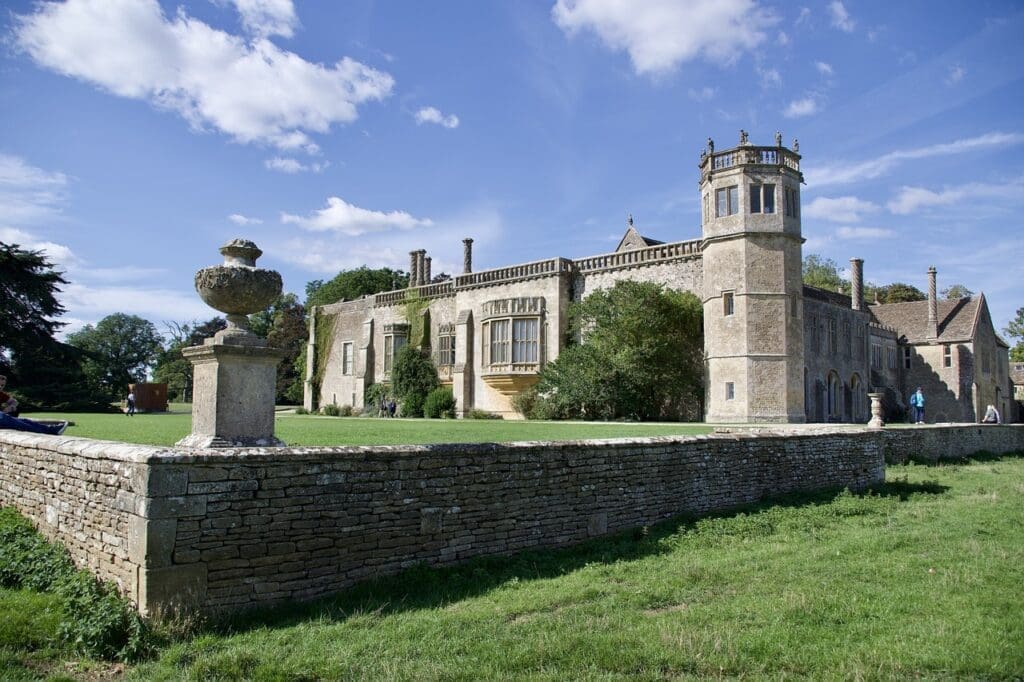
Cottages and inns dating back to the 15th century form a breathtaking backdrop, much admired by film makers over the years. From Pride and Prejudice to Harry Potter, Lacock has starred in many film classics.
Walk through the historic abbey located in the town center, grab a bite to eat at one of the many pubs, and enjoy the quaint ambiance of the quiet village.
Getting Around the Cotswolds
The Cotswolds is served by a comprehensive network of road, rail, and bus links making is easy to get around.
Car:
If you are able and willing, driving is the best means of exploring the area as it will allow you more flexibility and greater control of your schedule. The Cotswolds is served by excellent links to the M4, M5 and M40 motorways, providing easy access to and from London and the national motorway network. The internal roads getting around the small towns are also well maintained.
Rail:
The Cotswolds are at the heart of the British Rail network with main line trains from London, the Midlands, the North, and the Southwest of England. There are main line railway stations at Bath, Cam and Dursley, Cheltenham, Gloucester, Kemble, Moreton-in-Marsh, Stroud, Charlbury, Kingham and Oxford. For detailed rail information and fares look at National Rail or The Trainline.
Bus:
The Cotswolds is manageable to get around by bus with local services linking main towns throughout the area. This would not be the first recommended means of travel but it’s there for those that don’t want to drive or train. Check the RailBus for fares and schedules.
—> Read More: Top 10 Most Visited Places in England
The Ultimate Pre-Travel Checklist
Download ‘10 Crucial Things To Do Before Traveling Abroad’ to avoid mistakes and ensure a smooth trip; adapters and electronics, packing tips, foreign currency, phone plans, and more!

